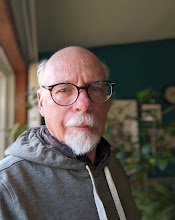My reviewer criteria. I like light, entertaining novels. I like smaller scale stories rather than epics. I like character focused novels featuring pleasant characters, with a minimum number of unpleasant ones. I greatly value clever and witty writing. I like first person, or close third person narratives. I dislike a lot of "head jumping" between POVs and flashbacks. I want a story, not a puzzle. While I am not opposed to violence, I dislike gore for the sake of gore. I find long and elaborate fight, action, and battle sequences tedious. Plot holes and things that happen for the convenience of the author annoy me. And I fear I'm a born critic in that I don't mind pointing out what I don't like in a story. However, I lay no claim to be the final arbitrator of style and taste, you need to decide for yourself what you like or dislike in a book.
Your opinions are always welcome. Comment below.
The Talisman Ring by Georgette Heyer A
Heyer seemed to have had a great deal of fun with this story, and so will you. The story is set in the English countryside prior to the Regency period. A wealthy earl or some such nabob, dies early on in the story. His natural heir, his grandson, had been hustled out of England because it appears that he murdered someone, though he denies it. He had pledged his treasured "talisman ring" of the title to pay a gambling debt, but when he went to repay the debt, the fellow who held it, hoping to keep the ring, avoided seeing him, and subsequently turned up murdered on a dark night. With his grandson unavailable, the dying earl obtains the promise of his half-French niece, who inherits the estate, and nephew of his, a man about town, to marry each other, a practice designed to keep the money in the family. The two, out of respect for the old guy, and for other reasons, agree do so, but, alas, they don't get along... And then the grandson, the rightful heir secretly turns up, tossing another wrench into the gears... To avoid a scandal should the grandson be apprehended, the two cousins set out to prove his innocence.
This is very much a mystery story with a romance side plot or two. But it's great charm, as usual, is in its sly and witty dialog and the wonderful characters Heyer created for this story.
There is a a reason why Georgette Heyer books have always remained in print for the better part of a century while other popular authors have faded away. Her stories are unique in their ageless authenticity of the language and setting, making them stand out from their imitators. Moreover, I doubt that her writing and effervescent storytelling has been matched, especially in her comedies such as this one. They are timeless.
Heyer sold her first novel at the age of 17 and year in year out never stopped writing and selling books in the millions not only in Regency romances, but in a variety of genre, from mysteries to medieval historical fiction. There is, as I've said in many a review, a very good reason for this. Don't let the genre label put you off.





%20style%203000.jpg)





